- Home
- Robert Hellenga
The Sixteen Pleasures Page 14
The Sixteen Pleasures Read online
Page 14
“Where’s the nearest source of water?” he asks the abbot, who has returned with a small table lamp.
“In the gabinetto, Dottore, behind the sacristy.”
“We’ll need water. Some of your men will have to carry it. You have buckets?”
“Yes, Dottore. Brother Sacristan will know.”
Dottor Postiglione lights a cigarette and throws the match on the floor. Holding his cigarette at arm’s length, he inspects one of the white patches. “I’ve never seen anything like this,” he says to one of the carpenters, an older man with small wide-set eyes. “I mean happening so fast. I warned Signor Giorgio about these heating machines. They’re pulling the moisture up faster than it can evaporate, so the whole process is accelerating.”
The carpenter touches his cheekbone to show that he appreciates the gravity of the situation.
A monk enters the chapel with a leaky wooden bucket of water from the gabinetto.
Dottor Postiglione, his cigarette dangling from his lips, removes his coat, rolls up his sleeves, washes his hands. Monks, gathered around the door, still chant and respond in a repetitive tribal ritual. Their chanting reminds Dottor Postiglione of the Buddhists who congregate in the apartment beneath him twice a day to chant wordlessly and meditate.
He measures thirty grams of ammonium bicarbonate into a wide-mouthed beaker. One of the carpenters drops a wrench and curses. A monk pours another bucket of water into the portable sink. The student volunteers watch in silence. Fifty grams of sodium bicarbonate. The bicarbonates form a base that will, if all goes well, dissolve the newly formed crystals. Twenty-five grams of Desogen (ten percent strength). The Desogen will “wet” the solution so that it will not form into droplets (like water droplets on a newly waxed car) and run down the surface of the painting. Six grams of carboxymethyl cellulose. To retain moisture.
Dottor Postiglione tears a sheet of Japanese tissue into small pieces, which he dips into the solution and applies to different areas of the painting, like small Band-Aids. The abbot, who has joined the monks in prayer, keeps popping back into the small chapel to see what’s going on.
“How does it look, Dottore?”
Dottor Postiglione holds out his hand, palm down, and moves it from side to side, like a man trilling an octave on the piano, but slowly.
“I was too proud,” the abbot says, “to listen to you before. I’ve learned something from—”
“Please, Abbot Remo. Let’s forget the past.”
“If I can help in any way . . .”
Dottor Postiglione puts an arm around the abbot and gently leads him to the door. “You belong here,” he says, “with your children. Pray without ceasing, Abbot Remo, pray without ceasing.”
8
Una cittadina
On the way to the Piazza Goldoni my natural curiosity got the better of me. The streets were full of people. A lot of shops were selling goods that had been damaged by the flood, and I tried to distract myself by buying a blouse, and then a scarf, and then a little sundress—all very cheap. And then I tried on a pair of shoes, but I knew, as I was trying on the shoes, that I was going to look at the book, just as I had known, once Molly told me about it, that I would look at the Manual of Modern Marriage that was hidden in the bottom of Papa’s underwear drawer. I’d been too embarrassed, in Madre Badessa’s presence, to really look; the pictures had been like flashbulbs popping in my face. But now I had them all to myself.
I went straight to the bar in the Piazza Signoria where the schoolboys had sung “‘ome on the Range” and settled myself, with an espresso, in an inconspicuous corner where no one could glance over my shoulder.
I took the book out of my book bag and placed it on the table next to my coffee. Though the embroidered binding was beyond repair the book itself had not suffered greatly. Like many of the books in the library, it had been squeezed so tightly in one of the massive oak presses that the paper hadn’t absorbed much water. The sheets of absorbent paper, which had been properly inserted every twenty pages or so, would absorb what remained. Mold would be a more serious problem. It would need to be treated with thymol as soon as possible.
The second part of the book—not the prayer book but the Aretino—consisted of two ottavo gatherings. The sonnets were printed on the verso of each leaf, the engravings on the recto. There were sixteen of each.
I started at the beginning and tried not to rush forward too rapidly, but the sonnets turned out to be a nasty piece of work—coarse, crude, disgusting—enough, almost, to make me lose interest in looking any further, though in fact I read them all. In many of the sonnets, interestingly enough, the women speak out as forthrightly as the men. But such language! I kept my face in the book to conceal my blushes.
she: What a beautiful cazzo, how long and thick!
If I matter to you, let me view it.
he: Why don’t we try, with me on top,
To see if you can hold this cazzo in your potta?
she: What do you mean “Why don’t we try?” “If I can hold?”
I’d rather do that thing than eat or drink.
he: But if I crush you with all my weight
I’ll hurt you.
she: You’re reasoning like Rosso.
Throw yourself on top of me
On the bed on the floor. If you were Marforio
Or a giant, it would make it even more thrilling;
Just as long as you reach my marrow
With this oh-so-venerable cazzo of yours
Guaranteed to cure potte of their “itching.”
he: Open wide your thighs.
There are women around dressed more fashionably But none so well fottuta as you.
The drawings themselves, however, told another story. The repertoire of poses, I suppose, was essentially the same as that of Mama and Papa’s Manual of Modern Marriage, or of the Kama Sutra, or of Japanese pillow books, but it seemed to me that whoever had executed these engravings had transcended this abstract schema and produced something that the spectator . . . no, “spectator” is the wrong word. “Spectator” suggests an outside observer, a peeping Tom, and this is precisely the opposite of what I felt myself to be.
“Drawing is discovery,” Mama used to say, but like most of the things Mama said about art, this maxim never made too much sense to me. But in this case I could see what she meant. The drawings struck me as private rather than public, not illustrations of something fixed and finished, not a record of completed experience, but something tentative, exploratory, as if the artist were in the process of discovering what the lovers were themselves discovering. I felt that I was included in this process, rather than just being a spectator. I felt that I was in motion, that my consciousness was expanding in a way that nothing in my actual concrete experience had prepared me for. And of course it was a visual consciousness, not a verbal one, which is why it’s so hard to communicate it in words.
It wasn’t till the bar filled up, about eleven o’clock, that I finally noticed the time. I’d been sitting there for more than two hours.
On my way to the Piazza Goldoni I noticed a sign in a store window that said: Chiuso perché sono nervoso. “Closed because I’m nervous.” I was nervous, too. There was too much hustle and bustle, too much traffic, too much noise, and I felt as if everyone I passed in the street knew what I had in my book bag, and that if they looked me in the eye they’d see the images that had been imprinted on my brain. I wanted to retreat, to get back to the convent.
I pressed on, however, forgetting that the Piazza Goldoni, which is right on the river, was in one of the most severely damaged areas in the city. The Arno, turning in on itself, had chewed up the embankment the way a sawmill chews up trees. There wasn’t much left of the bookstores. A tall man in a gray overcoat was standing in the piazza, smoking a cigar and crying openly. I wondered if he might be Signor Giustiniani, but I di
dn’t have the heart to approach him.
My first thought was to try Feltrinelli or Marzocco, the big bookstores downtown. My second was to try Dottor Postiglione at the Palazzo Davanzati, which was much closer.
I made my way to the Palazzo Davanzati, where I learned, with some difficulty, that Dottor Postiglione was at the Badia. A secretary who was overdressed, at least for my taste, looked me over, decided I wasn’t important, and told me to leave the book with her, which I was not about to do. Instead I made my way to the Badia, which was one of my favorite spots in the city. It had always been the third stopping point on Mama’s tours, which proceeded chronologically rather than spatially, starting down at the Ponte Vecchio, to demonstrate why the city was built here (at the narrowest spot in the river between Pisa and the mountains) rather than somewhere else, moving on to the Piazza Repubblica (site of the original Roman camp) and then heading straight west to the Badia, located on the edge of the old Roman city. Mama had a specially dramatic way of entering the Badia, which is one of the reasons I liked it. There’s an unobtrusive door on the Via Dante Alighieri, which is dark and no wider than an alley, a door that might be the back door to a warehouse or a police station (and in fact the Badia does house the Prefettura di Polizia). Mama would suddenly pause, and then, without warning, as if she were acting on a sudden impulse, turn and lead us (by “us” I mean myself and a group of American students) through the door and down a long narrow corridor that leads to the church itself. She would then stride across the church, up the steps that led to the high altar, through another obscure door on the right, and up a flight of unlit stairs. The effect was always the same. You felt you were being led into an inner sanctum where maybe you weren’t supposed to be, and that some monk was going to appear mysteriously and block your way. Of course, any tourist with a good guidebook could have done the same thing, but very few did.
At the top of the stairs was another door, also mysterious. This door opened onto the upper portico of the Chiostro degli Aranci, the Cloister of the Oranges. There hadn’t been any orange trees for years, and the grass had gone to seed, but it was a peaceful place, partly because very few people found it. You couldn’t hear the noise of the city from here. A sequence of frescoes depicting the life of Saint Benedict offered several amusing scenes. In one a glass of wine, poisoned by one of the monks, shatters in Saint Benedict’s hand just as he is about to drink it. In another a crow knocks a poisoned loaf of bread out of the saint’s hand. In another a brother who has fallen into the lake is rescued by the saint, who is able to walk on the surface of the water.
The visit to the Badia was always a success. I sometimes stopped at the cloister. I practiced Mama’s dramatic way of entering the church and surprised some of my Italian friends, who had never been inside.
There was another thing about the cloister that I liked. There was, on the lower level, a “foosball” game, one of those table games where you knock a ball back and forth by rotating levers with little men attached to them. Completely incongruous, but there it was. Was there some kind of youth group that met in the Badia? Did the monks themselves play “foosball,” which the French call “babyfoot”? All the students had to take a picture of the “babyfoot” game. It humanized the whole place, made it more real, somehow. Mama and I also had lots of pictures that managed to include that “babyfoot” game.
Mama’s tours always concluded with brief stops at the tomb of Ugo, marchese of Tuscany, and Fra Filippo Lippi’s Appearance of the Madonna to Saint Bernard, and finally at the famous Lodovici Chapel, which is what everyone comes to see, and which is where I found Dottor Alessandro Postiglione.
When I first entered the church, from the Via Dante, I heard the sounds of chanting and was reluctant to interrupt a service. I could see, however, that there was no one behind the high altar. I poked my head around the corner and saw an astonishing sight: about thirty monks on their knees in three rows, half circles, around the door that led to the Lodovici Chapel. I couldn’t make out what they were saying. The church was dark, but there was a bright light in the chapel itself.
On my way past them I was accosted by a monk who turned out to be the abbot. “I’m sorry, Signorina, the chapel is undergoing restoration.”
“I’m bringing something to Dottor Postiglione,” I said, undeterred.
“Please, Signorina, you can see that we are suffering a terrible tragedy.”
“It will only take a moment,” I insisted. I wanted to see what in the world was going on. If I’d been a man I believe the abbot would have stopped me forcibly, but I think he was afraid to touch a woman. At least he drew back as I pressed forward.
I did not have a very clear visual memory of the chapel from my earlier visits—I tended to remember Mama’s enthusiasm more than actual details of what she was enthusiastic about—but the scene that I saw when I entered this time has stayed with me in minute details. A wooden scaffolding. Bright floodlights, like the ones Papa used to get out at Christmas when he wanted to take movies. Dottor Postiglione’s shiny bald head reflected the light. There was a bronze cast to it, as if it were getting some sun. But the main shock was the row of white bandages plastered all over the two lower frescoes, so that they reminded me of the figures you see in cartoons (and perhaps in real hospitals, too), completely bandaged up. It was physically painful to look at.
It took me a while to grasp what was going on. An old man in dirty clothes that suggested some kind of uniform was coating the bandages with a transparent jellylike substance—sort of like Vaseline—and handing the strips to Dottor Postiglione, up on the scaffolding, who applied them with infinite care, pressing them with his fingertips, following the contours of invisible wounds. It was impossible to determine the subject of the two lower frescoes, not simply because of the bandages but because the surface had become cloudy, as if giant cataracts had formed.
I watched silently, listening to the rhythmic sound of the chanting monks, till Dottor Postiglione climbed down the ladder propped against the scaffolding and began to mix another batch of the salve or ointment—whatever it was he was applying to the surface of the painting. His face was strained, though like the young man leaning against the wall, he was smoking a cigarette as he worked. (I had to remind myself that this was Italy, where doctors smoke in hospital wards.) He looked past me at the abbot, who was standing behind me in the doorway, apologizing for my interruption, and then at me. Then he smiled and tilted his head.
“Ah, Signorina, what an unexpected pleasure. Now you can see that I earn my living like an honest man.”
“I never thought otherwise,” I said, though in fact I had, somehow, been thinking otherwise.
“Like a bricklayer, as you can see, or a plasterer, really—un artigiano.”
“Can I help?” I said, forgetting, for the moment, the purpose of my visit.
“Che fortuna! But of course. Carlo,” he turned to the old man, “please show the signorina how to prepare the compresses, and then maybe you could bring us some coffee.”
And that was how I spent the rest of the day. Dottor Postiglione applied the compresses as rapidly as I could prepare them. Carlo returned in half an hour with two cups of espresso on a tray with a sugar bowl and some little spoons and then settled himself comfortably on the floor. The room was strangely warm from some fantastic space heaters, though these had been turned off.
Four scenes from the life of Saint Francis had been frescoed on the wall above the altar: Saint Francis disrobing in the public square, casting off his rich man’s clothes in order to go naked, while the bishop, at his father’s orders, rushes to cover his nakedness without quite succeeding; Saint Francis preaching to the birds; Saint Francis dancing before the pope; and finally Saint Francis receiving the stigmata. The two lower frescoes had been completely filmed over with—as I learned from Dottor Postiglione—salts that had been carried upward by the moisture rising up through the thick walls. The upper two fres
coes weren’t so bad, though you could see that they were starting to cloud over too.
We worked without talking, without thinking. At least I wasn’t thinking. I was drifting and dreaming even as I followed Dottor Postiglione’s instructions for a new batch of the solution. I’d been doing a lot of thinking and it was nice to turn my mind off for a while. The only interruptions came from time to time from the anxious abbot. “Pray without ceasing,” Dottor Postiglione would say cheerfully. “Pray without ceasing, Abbot Remo, and all will be well.” I thought that this was the sort of joke a doctor might make during an operation to relieve the tension.
I’ve always felt intimidated in the presence of great art. I’ve always felt that my responses were inadequate. “Just sit quietly and look,” was Mama’s advice. But sitting quietly and looking always made me nervous. Like many people, I’d rather read about a painting than look at it. Or I’d rather hear someone talk about it. But working with Dottor Postiglione gave me a new perspective. The pressure was off. There was no need to work up an intense spiritual experience. No one was going to quiz me to make sure I’d appreciated them properly. The job wasn’t to appreciate them but to keep preparing the compresses. I saw the frescoes as things, pieces of this world rather than venerable icons pointing the way to some remote metaphysical realm called Art, physical objects that could wear out, like a shirt, and then be mended, and as things I found them easier to like. Like old shirts. Saint Francis dancing before the pope, Innocent III, who has just given him permission to found a religious order. What a wonderful image. I’d seen it a dozen times before, but this was the first time it made me want to dance, too.
At one o’clock old Carlo disappeared for his siesta. He returned at three and then went for more coffee. Each trip took about forty-five minutes, though there was a bar just across the street, on the Via del Proconsolo, where Mama had always stopped with the students for hot chocolate. About five o’clock a reporter from La Nazione arrived, took some pictures, asked Dottor Postiglione some questions and then turned to me.

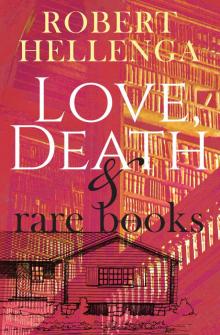 Love, Death & Rare Books
Love, Death & Rare Books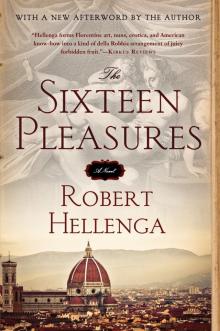 The Sixteen Pleasures
The Sixteen Pleasures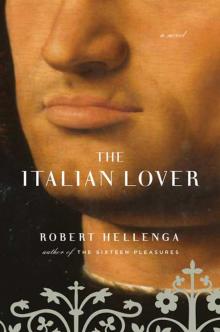 The Italian Lover
The Italian Lover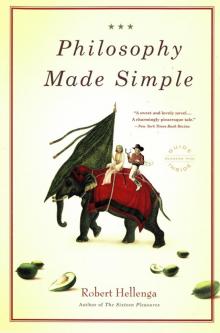 Philosophy Made Simple
Philosophy Made Simple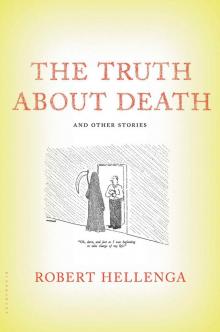 The Truth About Death
The Truth About Death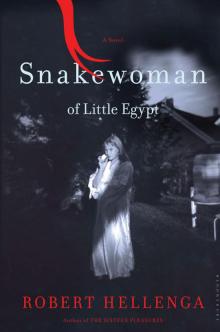 Snakewoman of Little Egypt
Snakewoman of Little Egypt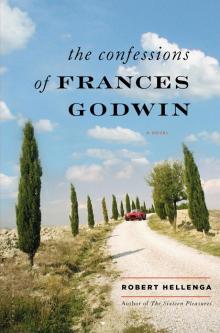 The Confessions of Frances Godwin
The Confessions of Frances Godwin